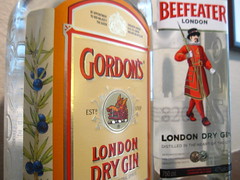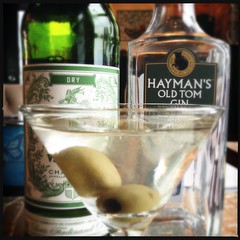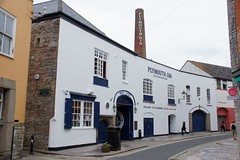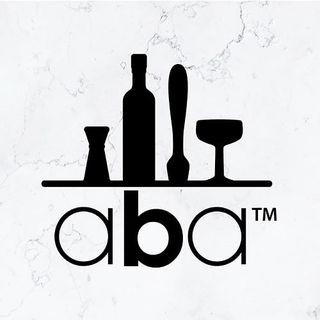
Genever
Genever is also called “Holland Gin” or “Dutch Gin” and is the oldest style of gin.
How’s it made?:
Genever Gin is made from grains – barley, wheat, rye and corn. They are fermented into malt wine and that wine is infused with botanicals to add the “gin” flavor. Then the infused barley wine is distilled into a concentrated spirit that carries with it much of the flavor of the botanicals. Now here is where the two types of Genever diverge:
- Jonge (Young) Genever is comprised of 15% spirit from the distilled malt wine. The rest is actually neutral grain spirits like the vodka we discussed earlier.
- Oude (Old) Genever is made with typically around 50% of the distilled malt wine. The result is a much richer and maltier Genever. Oude Genevers can be barrel aged or not.
- Barrel-Aged Oude Genevers have the characteristics of Gin but start to have some of the malty, aged characteristics of a light whiskey.
Use in Cocktails:
Many pre-prohibition drinks used Genever gins in their recipes. This results in a much richer mouth feel along with a clear botanical focus. We’ll discuss this in the homework – try making a pre-prohibition cocktail with Genever gin and taste how that changes the drink!

London Dry
London Dry is by far the most popular type of Gin. Common brands include Tanqueray, Beefeater and Bombay.
How’s it Made?:
London Dry gins start as neutral grain spirits (like vodka as we discussed previously.) Botanicals are added, including juniper berries and other ingredients that may include citrus, herbs, roots and even vegetables. Since the herbal mix is what gives a gin its distinctive taste, you usually won’t be able to find out the exact recipe of a specific brand. The neutral grain spirit is infused with the distiller’s choice of botanicals, then the whole mixture is distilled again, up to at least 70% alcohol. Finally, the spirit is brought back down to bottling strength with water.
Use in Cocktails:
The main characteristic of London Dry Gins are their strong botanical and juniper focus. Expect these gins to bring some degree of bitterness to your drink, (though the degree will vary by brand.) I find that this type of gin often does a great job of reinforcing citrus aroma in cocktails.

Old Tom
Old Tom gin was alongside Genever as a very common gin in pre-prohibition cocktails, but it fell out of favor in the mid-1900’s and only recently has been resurrected. Think of Old Tom gins as being somewhere between Genevers and London Drys. In a lot of ways, they really are!
How’s it Made?:
There’s some disagreement on how Old Tom gin used to be made, and it’s likely that it actually represented a wide variety of styles. We’ll make some generalizations here, but the key is to know that Old Tom Gin is made partly with malted barley like genever, but it’s mixed with high-proof spirit and botanicals before the whole thing goes into the still. Some Old Toms also add some sugar to the mix, and some do not. Some are aged in barrels, and some are not.
Use in Cocktails:
The important thing about Old Tom Gin is that it’s “gentler” than the London Drys and can be more approachable for people who say they don’t like gin. That’s because it tends to have subtler botanicals and nowhere near as strong of a juniper flavor. It’s also a tad sweeter.

Plymouth
The type “Plymouth Gin” is reserved for gins made within the city of Plymouth, England. Today there’s only one brand – called “Plymouth.”
How’s it Made?
Plymouth gin is made in much the same way as London Dry. It starts as a wheat-based neutral spirit and flavored with juniper, coriander, oranges and other botanicals. The actual recipe is, of course, a secret.
Use in Cocktails:
Plymouth gin is available in both normal strength (40%) and Navy strength (47%.) It’s well known for its smoothness and long, peppery finish, but most known for being more earthy as a result of using more earthy roots in the infusion. Like the Old Tom, it is a little sweeter than the London Dry.

New Western Style
The defining characteristic of a New Western Style gin is the fact that it does not lead with a strong juniper flavor. It is still gin, meaning there will be some juniper in the recipe, but it’s not generally the dominant flavor in the gin.
How’s it Made?
New Western Style gins are made the same way as London Dry, but with less juniper in the process and more focus on the other botanicals.
Use in Cocktails:
You can expect a gin in this category to have more of a citrus element and other botanicals. It will not have a strong juniper flavor, which can make it a more approachable style for vodka drinkers.

